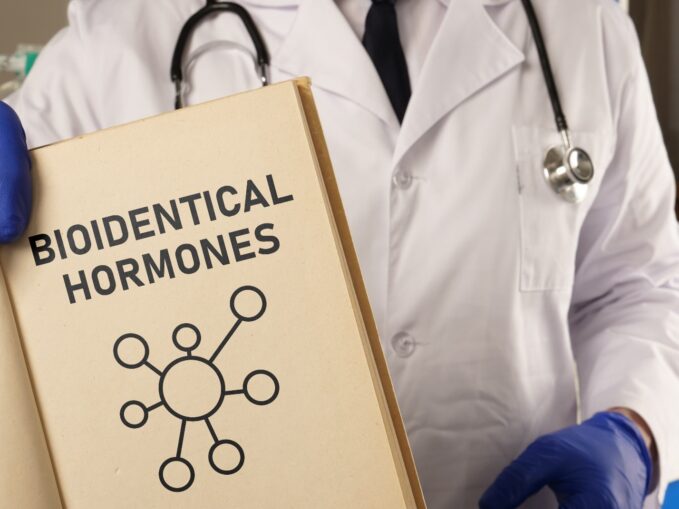Hormone replacement therapy (HRT) has long been a cornerstone treatment for managing symptoms associated with hormonal imbalances or deficiencies, typically arising from menopause, andropause, thyroid dysfunction, or other endocrine disorders. In recent years, bio-identical hormone replacement therapy (BHRT) has emerged as a popular alternative to traditional HRT, offering customized treatments tailored to individual hormonal needs. Dr Richard Hatfield, MD, provides an in-depth exploration of BHRT, discussing its definition, benefits, potential risks, and how it compares to conventional hormone therapies.
What is Bio-Identical Hormone Replacement Therapy?
Bio-identical hormone replacement therapy involves the use of hormones that are chemically identical to those produced by the human body. These hormones are derived from plant estrogens and are precisely matched to the individual’s biological hormones, which is purported to offer a natural and more harmonious integration with the body’s biological processes. The most commonly replicated hormones in BHRT include estrogen, progesterone, and testosterone.
The process of BHRT begins with detailed lab tests to assess the patient’s current hormone levels. Based on these results, a healthcare provider prescribes a specific dose of bio-identical hormones tailored to correct the imbalance. Unlike conventional hormones, which are often produced in standard doses by pharmaceutical companies, bio-identical hormones can be compounded—mixed in a pharmacy according to a doctor’s prescription—to meet specific dosage requirements.
Benefits of Bio-Identical Hormone Replacement Therapy
- Customization: The primary advantage of BHRT is its ability to be customized to individual needs, which can lead to greater effectiveness and fewer side effects. Since the hormones used in BHRT are identical at the molecular level to natural human hormones, they can be more easily accepted by the body’s receptor sites.
- Reduced Side Effects: Many users of BHRT report fewer side effects compared to those taking synthetic hormones. This is attributed to the natural structure of the hormones, which the body can metabolize as it would its own.
- Versatility: BHRT can be administered in various forms including creams, pills, patches, gels, or injections, thus offering flexibility in terms of administration based on personal preference and absorption efficiency.
- Potential for Improved Well-being: Patients often report improvements in energy levels, mood, libido, and overall quality of life after starting BHRT. There’s also some evidence suggesting that BHRT can help reduce the risk of diabetes, tooth loss, and cataracts, although more research is needed in these areas.
Risks and Considerations
While BHRT offers many potential benefits, there are also risks and considerations that need to be acknowledged:
- Regulation Issues: Bio-identical hormones are often compounded in pharmacies. The U.S. Food and Drug Administration (FDA) does not regulate compounded medications to the same extent as it does commercially available drugs, which can lead to inconsistencies in purity and potency.
- Limited Research: There is less research on the long-term safety and effectiveness of BHRT compared to traditional HRT. Although initial reports and anecdotal evidence suggest benefits, these findings need to be backed by larger, peer-reviewed studies.
- Health Risks: Similar to conventional hormone replacement therapy, there are risks associated with hormone therapy in general, including an increased risk of blood clots, stroke, and certain types of cancer. It is essential for patients to discuss these potential risks with their healthcare providers.
- Cost and Accessibility: BHRT can be more expensive than traditional HRT and may not be covered by all insurance plans because of its customized nature.
Comparing BHRT with Traditional HRT
The fundamental difference between bio-identical and synthetic hormones is in their chemical structure. Synthetic hormones are often slightly different from human hormones to allow for patenting by pharmaceutical companies. These differences can affect how the hormones act in the body, potentially leading to different side effects.
Advocates of BHRT argue that because bio-identical hormones mimic the exact structure of human hormones, they are safer and more effective. Critics, however, caution that without extensive and rigorous testing, these claims remain largely unsubstantiated scientifically.
Bio-identical hormone replacement therapy represents a promising, more natural alternative to traditional hormone replacement therapies. It offers personalized treatments with potentially fewer side effects, although it also comes with challenges related to regulation, cost, and the need for more comprehensive research. For those considering BHRT, it is crucial to consult with a healthcare provider who specializes in this area to carefully weigh the benefits against the risks and to ensure the most appropriate and safe treatment approach. As research continues to evolve, it will provide clearer insights into the efficacy and safety of BHRT, helping individuals make more informed decisions about their hormonal health management.
